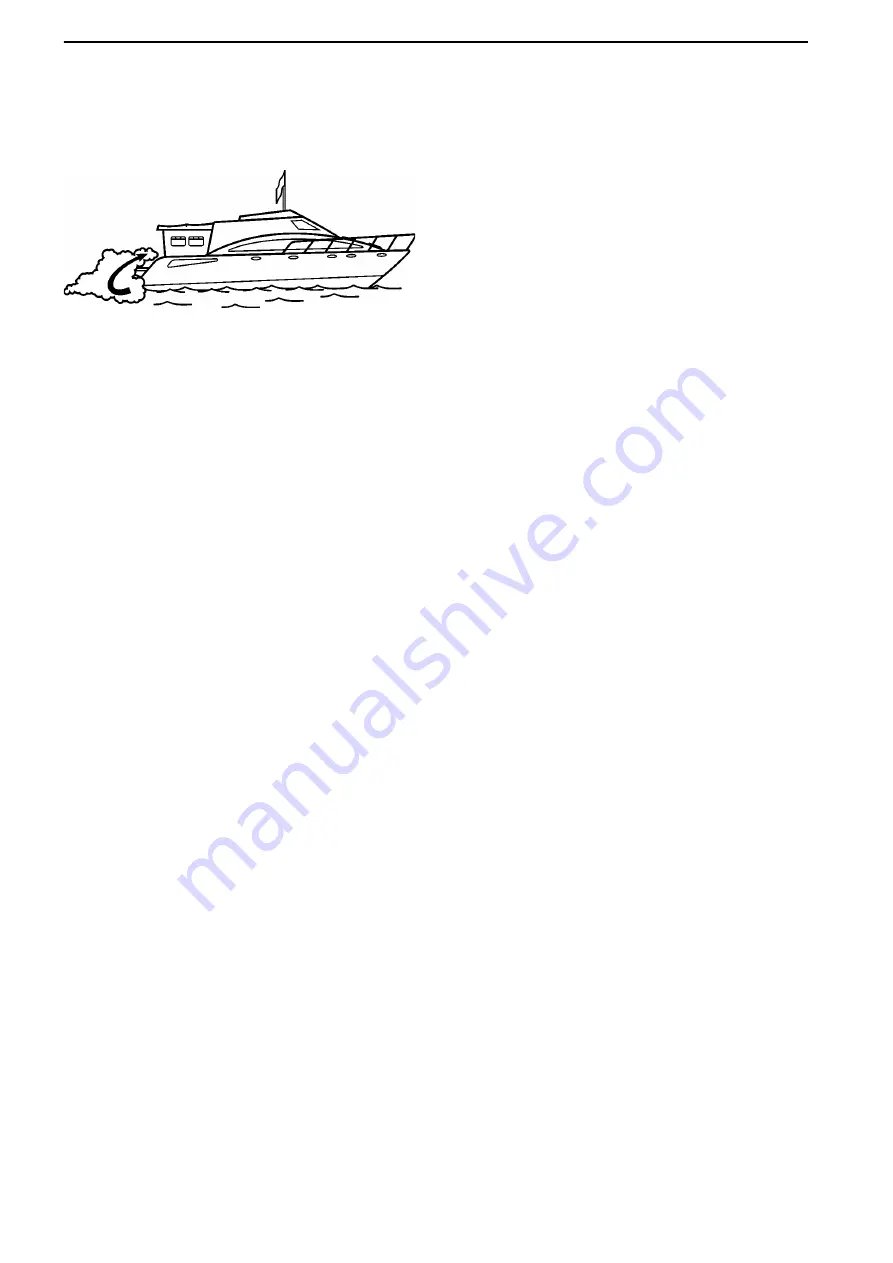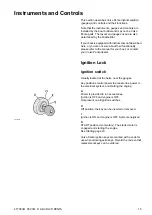
● Opening and closing ports, hatches, doors, and
windows may raise or lower CO levels on board
a boat. When airflow is moving forward inside the
boat, CO may be entering the boat.
● Operating a boat at slow speeds with a following
wind should be avoided. Consider changing
direction, adjusting speed, or both
(see image #51621).
● Be aware that cockpit and deck drains can be a
source of CO ingress into boats, especially boats
with cockpits or decks enclosed with canvas or
permanent boat structures.
● Altitude and Sea Conditions – Operation at alti-
tudes greater than 5,000 ft (1500m) contributes
to inefficient engine performance and may
require adjustments to ignition systems, fuel sys-
tems, or changing the propeller’s size or gear
ratio. Failure to make adjustments to ignition sys-
tems and/or fuel systems for altitude conditions
may cause an increase in CO. Reduced power
resulting from increased altitude may require
adjustments to propeller size. Heavy seas or out
of trim conditions tend to load engines, resulting
in reduced performance and increased CO pro-
duction.
● Portable Generator Sets – Do not use this equip-
ment on boats. Gasoline powered portable gen-
erator sets produce CO. These sets discharge
their exhaust products in locations which can lead
to an increase in the accumulation of carbon
monoxide in enclosed accommodation spaces.
Maintenance
Engine Performance – Efficient engine performance is
vital to minimizing CO production. Efficient engine per-
formance can be ensured through regular mainte-
nance. Refer to the
Maintenance Schedule
and
Main-
tenance
sections of this manual for instructions on
keeping your engine and sterndrive in good condition.
NOTICE!
Be sure to see your Volvo Penta dealer for
regular inspections.
51621
Safety Information
12
47706041 07-2014 © AB VOLVO PENTA
Summary of Contents for V6-200
Page 1: ...OPERATOR S MANUAL V6 200 V6 225 ...
Page 110: ......
Page 113: ......
Page 114: ...VPA 47706155 English 01 2015 VPA 47706041 English 07 2014 ...















































